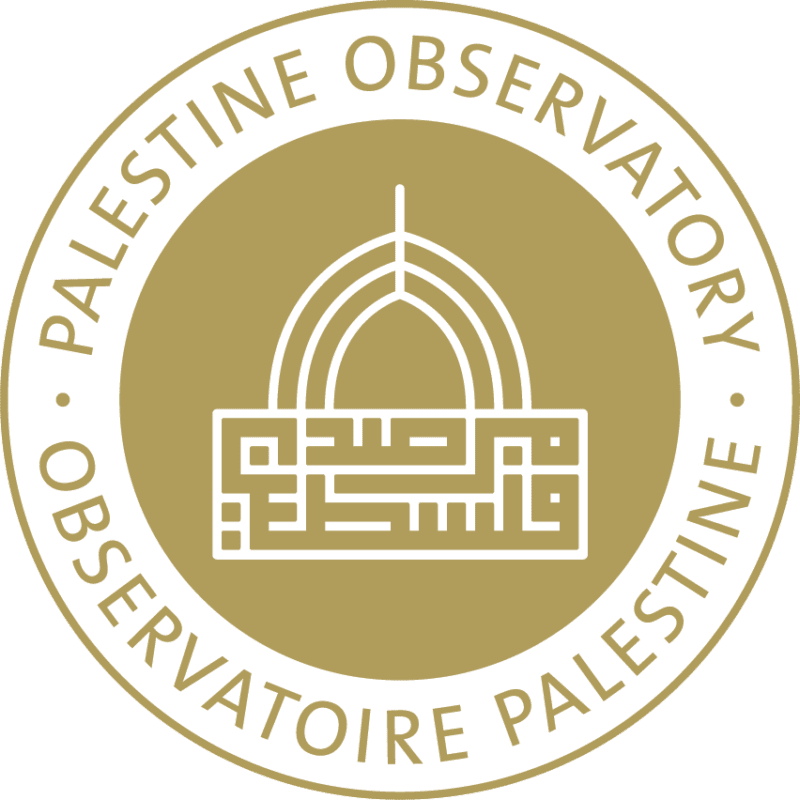The West Bank faces 314 incursions and 49 settler attacks

Photo from the Palestinian News and Information Agency (WAFA)
April 15, 2025
The number of Palestinian murdered in a single week reached 232, along with 839 injured while the number of murdered from October 7, 2023, to April 14, 2025, reached 51,937, with 123,014 injured. The forced displacement of Palestinians by the occupying forces continues in the worst situation in the Gaza Strip since the beginning of the Israeli aggression on October 7, 2025. The Organization of Islamic Cooperation’s Media Observatory on Israeli Crimes against Palestinians documented, from April 8 to 14, 2025, deliberate Israeli behavior aimed at exhausting Palestinians through their continuous displacement from one area to another. The occupying forces warned civilians living in the neighborhoods of Zeitoun, Shuja’iyya, and Tuffah to evacuate their places ahead of an Israeli ground attack. The warnings came after a massacre in the Shuja’iyya neighborhood claimed the lives of fifty Palestinians, most of them women and children, amid ongoing shelling of Khan Yunis, Rafah, and the Nuseirat refugee camp. The most prominent attack in the Gaza Strip was the Israeli shelling of the Al-Ahli Baptist Hospital in central Gaza, which crippled the hospital’s ability to receive emergency cases. In addition, the Al-Mukhtar flour distribution point, run by the United Nations Relief and Works Agency for Palestine Refugees in the Near East (UNRWA), was bombed east of Khan Yunis. This is aimed at starving the people of Gaza through ongoing war crimes.
The United Nations Office for the Coordination of Humanitarian Affairs (OCHA) confirmed that the situation in the Gaza Strip is the worst since the outbreak of the Israeli war. Gaza has witnessed all manner of crimes, while the United Nations Educational, Scientific and Cultural Organization (UNESCO) revealed that Israeli occupation forces destroyed 94 archaeological sites in Gaza.
In the West Bank, the same crimes continued, particularly against places of worship. Extremist settlers continued their incursions into the courtyards of Al-Aqsa Mosque, while the occupation authorities banned Sheikh Muhammad Salim, the Imam of Al-Aqsa Mosque, from the mosque for a week.
For the second year in a row, only a small number of Christians participated in Holy Week and Easter prayers, due to Israeli occupation forces preventing thousands of Palestinian Christians from reaching Al-Quds on Palm Sunday. In one week, occupation forces arrested 190 Palestinians, including four children, during 314 raids on various West Bank cities and villages. Three children were injured, while a settler driving his vehicle ran over a child in the town of Hawara in Nablus, causing fractures.
The occupation authorities demolished 20 homes, a wedding hall in the town of Beit Liqya, and a horse stable in Beit Hanina in Al-Quds. Settlers burned a wedding hall near the village of Saniriya in Salfit. The occupation forces also demolished an agricultural room and two water collection wells in Ramallah and the northern Jordan Valley in Tubas, in addition to a number of rooms and agricultural facilities. They uprooted trees in the town of Beit Ula in Hebron, bulldozed agricultural land in the village of Burqa in Nablus, and confiscated nearly 100 solar panels used for electricity generation in the northern Jordan Valley in Tubas and a bulldozer in Nablus.
In terms of settlement crimes, over the course of seven days, Palestinian towns and villages were subjected to 10 settlement activities, during which settlers conducted engineering surveys on lands south of the town of Bani Na’im in Hebron, while others seized land and placed a mobile home on it in the town of Beit Ur al-Tahta in Ramallah. Others placed mobile homes on Mount Ras Zeid (Al-Khandaq) in Nablus and in the town of Kobar in Ramallah, to establish settlement outposts. Settlers established greenhouses on lands in the village of Rujeib, and settlers paved a settlement road around the village of Qaryut in Nablus. In addition, settlers bulldozed agricultural lands with an area of approximately 150 dunums south of Bethlehem. Others bulldozed agricultural land in the Al-Rakeez area in the Masafer area of Yatta town, demolished stone walls, cut down a number of trees, destroyed the fence surrounding the land, and stole the landowner’s cell phone after assaulting him.
In the same context, the occupation forces ordered the confiscation of approximately 137 dunams of land in Al-Bireh, the town of Silwad, and the villages of Ein Yabrud, Beitin, Barqa, and Mikhmas (Ramallah) for settlement purposes. A military observation room was also established south of the town of Bani Na’im in Hebron.
The number of settler attacks on Palestinians in seven days reached 39, including burning agricultural land in the town of Kobar in Ramallah, cutting down 40 olive trees in the village of Marda in Salfit, closing an agricultural road in the town of Kobar in Ramallah, stealing three gas cylinders in the village of Ramin in Tulkarm, throwing stones at Palestinian cars north of the town of Kafr ad-Dik in Salfit, causing material damage, and assaulting Palestinians living in tents near their home that was demolished by the occupation in the village of Kafr ad-Dik in Salfit. In the village of Sika in Hebron, settlers entered a Palestinian home and assaulted them.
It is noteworthy that the total number of Israeli crimes between April 8 and 14, 2025, amounted to 2,397, including those affecting the education sector. In the Shuafat refugee camp in Al-Quds, occupation forces raided three UNRWA schools and served them with closure notices. They also raided the Al-Quds University campus and fired sound bombs and tear gas at students as they held a march to denounce the aggression on the Gaza Strip. Sound bombs and tear gas were fired at the Al-Rashaydeh Girls’ School during their raid on the Al-Rashaydeh village in Bethlehem. In addition, the headquarters of the Palestinian General Federation of Trade Unions was closed and its secretary was arrested.
